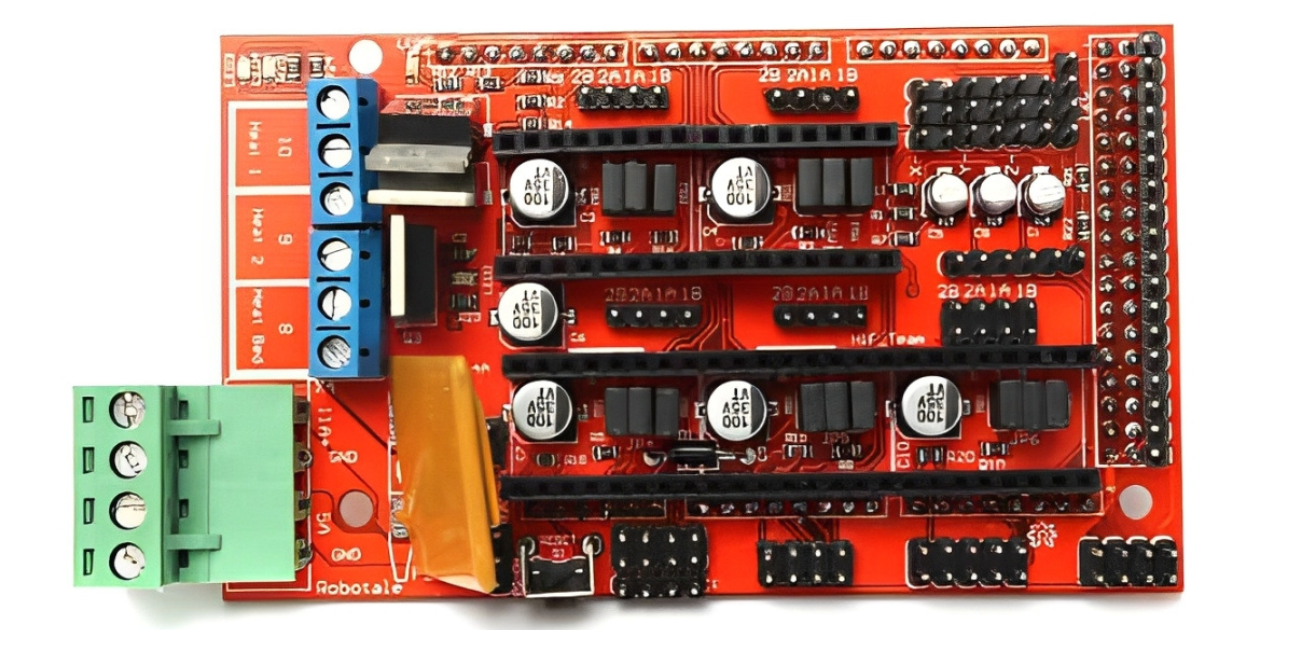
DSM Online Support
Support Master
Welcome to DSM Online
How can I help you today
How can we assist you? please let us know the support you need from DSM Online

For anyone who's ever delved into the world of DIY 3D printing, the name "RAMPS 1.4" likely conjures images of a familiar red board, often paired with a blue Arduino Mega. While newer, more powerful control boards have emerged, the RAMPS 1.4 3D printer control board remains a foundational piece of hardware that has powered countless RepRap machines and continues to be a popular choice for beginners and experienced makers alike. But what exactly is it, and why has it maintained its relevance? Let's explore.
RAMPS stands for RepRap Arduino Mega Pololu Shield. In essence, it's an "adapter" board that plugs directly onto an Arduino Mega 2560 microcontroller. Its primary purpose is to consolidate all the necessary electronics for a 3D printer onto a single, relatively compact, and cost-effective unit.
Before RAMPS, building a 3D printer required a more complex wiring setup with individual components. RAMPS simplified this significantly by providing dedicated sockets and connections for:
Stepper Motor Drivers: Typically five slots for easily pluggable A4988 or DRV8825 stepper motor drivers, controlling the X, Y, Z axes, and one or two extruders. This modularity makes replacement and upgrades straightforward.
Heaters: Connections for a hotend (extruder heater) and a heated bed, each with dedicated MOSFETs (power transistors) for controlling high current.
Thermistors: Inputs for temperature sensors (thermistors) to monitor the hotend and heated bed temperatures, crucial for accurate printing.
Endstops: Inputs for mechanical or optical endstop switches for each axis (X, Y, Z, min, and max), allowing the printer to home its position.
Fans: Outputs for cooling fans, essential for print quality and electronics cooling.
Expansion Ports: Dedicated pins for adding accessories like LCD displays, SD card readers for standalone printing, and other custom modifications.
This all-in-one design, combined with its open-source nature, made RAMPS 1.4 incredibly popular for hobbyists building their own 3D printers from scratch.
Despite the advent of more advanced 32-bit boards, RAMPS 1.4 still holds several compelling advantages:
Cost-Effectiveness: It's one of the most affordable 3D printer control solutions available, making it an excellent entry point for new hobbyists or those on a tight budget.
Open-Source & Community Support: Being open-source, RAMPS 1.4 benefits from a massive, active, and supportive community. Finding documentation, troubleshooting guides, and firmware (like Marlin, which is highly compatible) is incredibly easy. This extensive support network is invaluable for DIY builders.
Simplicity & Modularity: Its shield-based design means easy assembly – just plug it onto the Arduino Mega. The pluggable stepper drivers simplify replacement if one fails, and the clearly labeled headers make wiring straightforward.
Proven Reliability: For basic Cartesian and Delta 3D printer configurations, RAMPS 1.4 has a long track record of reliable performance when properly set up.
Learning Platform: For those looking to understand the fundamentals of 3D printer electronics, RAMPS 1.4 provides an excellent hands-on learning experience. You can easily visualize the connections and how different components interact.
While robust, RAMPS 1.4 does have its limitations, primarily due to the 8-bit architecture of the Arduino Mega it relies upon:
Processing Power: The 8-bit microcontroller can sometimes struggle with very high print speeds, complex calculations (especially for Delta printers with inverse kinematics), or high micro-stepping settings, potentially leading to stuttering or reduced print quality.
Limited Memory: The Arduino Mega's memory can become a constraint when trying to implement advanced features or larger firmware versions.
Thermal Management: The small form factor of the stepper drivers on the RAMPS board can sometimes lead to overheating if not adequately cooled, requiring heatsinks or active cooling.
Fuse Issues: Older revisions or low-quality clones might have issues with the polyfuses, which can trip too easily or not offer sufficient protection for higher current demands, particularly with heated beds. Many users choose to bypass these with external MOSFETs for the heated bed.
For many, building a 3D printer with RAMPS 1.4 is more than just assembly; it's a journey into understanding the intricate dance between hardware and software. Configuring the Marlin firmware to match your printer's kinematics, tuning stepper driver current, and calibrating your axes are all part of the rewarding process.
While the 3D printing landscape is constantly evolving with newer, more powerful boards offering quieter operation and advanced features, the RAMPS 1.4 3D printer control board remains a testament to effective open-source design and a fantastic stepping stone for anyone eager to build and customize their own additive manufacturing machine. It's a true classic in the DIY 3D printing world, and its legacy continues to shape how we approach personal fabrication.